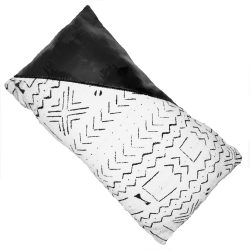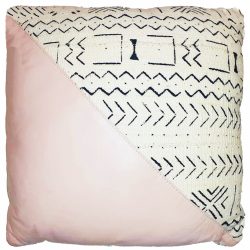Description
Moroccan Handira Wedding Cushion
Berber wedding blankets are woven in anticipation of, you guessed it, a wedding, by the bride’s female relatives. It can take many hours — even weeks — of work to attach those hundreds of mirrored sequins once the weaving is complete; it is thought that during this collaborative task, the bride’s relatives teach her all about the birds and the bees, among other marital duties and expectations. After the wedding ceremony, the bride wears the blanket tied around her neck as a kind of cape. It might be associated with her trip to her new marital home, which could be a chilly ride.
For Berbers, objects and visual motifs contain myriad meanings and purposes. The process of hand-weaving, itself, when undertaken mindfully, is thought to endow the textile with baraka, or blessings. When complete, the wedding blanket serves not only as warmth and decoration for the bride, but also to ward off evil and to bestow fertility and good luck upon the newlyweds.
Almost Modernist in their restrained aesthetics, handira are neutral in color, though often accented with bands of kilim patterns, enlivened with rectilinear lines or boxes of texture. At the same time, the sequins lend a touch of glamour, and the texture and handmade feel of the blankets add a traditional exoticism. One can only hope, then, that an appreciation of the aesthetic qualities of the handira awards the user the same spiritual benefits bestowed upon the bridal couple!
Tribal Village aims to keep the arts and crafts of Africa alive by
supporting the artisans and acknowledging the ancient skills.
All modern decor, architecture and culture stems from Africa.
We only sell the genuine items directly from the source.





